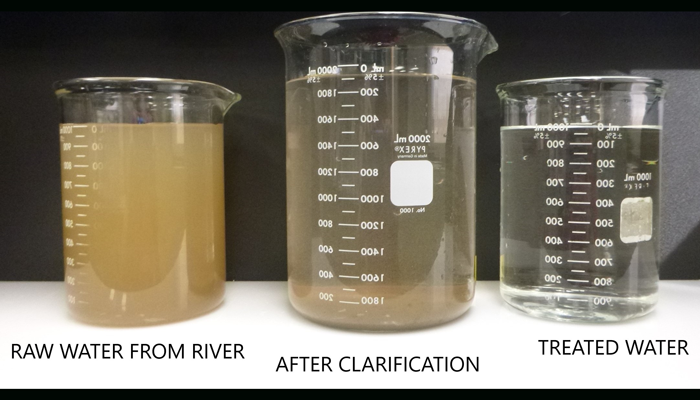Spring Run-off

The Red Deer River is the source of drinking water for the city of Red Deer and many other communities in central Alberta. In the spring, melting snow and ice produce changes to water flows of rivers and streams in the Red Deer River Watershed; this is known as spring run-off. This can cause higher than normal stream flows and flooding in low-lying areas, and can create temporary changes to the drinking water quality. It is important to understand the effects these changes have on our tap water.
Spring run-off refers to the high water flows we see when warmer temperatures cause snow in the watershed to melt. This can cause higher than normal stream flows and flooding in low-lying areas. This stormwater will carry with it dead and decaying organic material such as last year’s leaves and grasses, as well as mud and silt stirred up by faster moving water.
Spring run-off is dependent on temperature and precipitation, and usually occurs from early March to early May.
What can I do to help protect water quality?
Stormwater carries debris from yards, driveways, sidewalks and roads. You can help by sweeping up grass clippings and leaves, scooping pet poop, and minimizing the use of fertilizers or pesticides. For more information, visit Only Rain in the Storm Drain.
How does The City prepare for spring run-off?
The Water Treatment Plant (WTP) continuously monitors river water quality through sampling and in-line instruments, working closely with other water treatment staff in the Watershed. During spring run-off, the WTP adds potassium permanganate and powdered activated carbon into the treatment process. These approved and safe chemicals are added to the water at Stage 2 of the WTP process, which help control taste and odour when there are high concentrations of organic matter in the river water.
Is the water safe to drink during spring run-off?
Yes. The water that leaves the Red Deer Water Treatment Plant meets or exceeds all federal and provincial environmental standards. The City performs rigorous testing around the clock to ensure water quality, and continually upgrades the plant’s infrastructure and processes to meet improving environmental standards.
Why does the water taste and smell different?
As the river picks up mud, silt, and other organic material during spring run-off, these materials may dissolve slightly and can give the water an earthy odour or taste. The Water Treatment Plant removes most of these organics, however due to higher levels during spring run-off, trace levels of organics may remain and be noticeable.
Why do I smell chlorine in the water?
Chlorine is a disinfectant used in the treatment process year-round. During spring run-off, some of the remaining organic material reacts with the chlorine in the treated water. This may make this smell more noticeable in the spring.
How long will the taste and smell last?
Each year is different, but on average run-off conditions last between three and six weeks. Mountain run-off in late June and early July can also cause these conditions, as will heavy rainfall events.
How can I combat the smell and taste in the spring?
Put water in a pitcher and let it sit on the counter or in the fridge, or try adding lemons. Filtering the water through a consumer charcoal filter can also help improve the smell and taste.
I’ve noticed a slight colour to the water when filling the sink or tub. Why?
Organic material will actually dissolve and stain the water a light brown color, similar to tea leaves in hot water. The treatment process removes most of the color, however, at times when the organic load is high some color may be carried into the treated water.